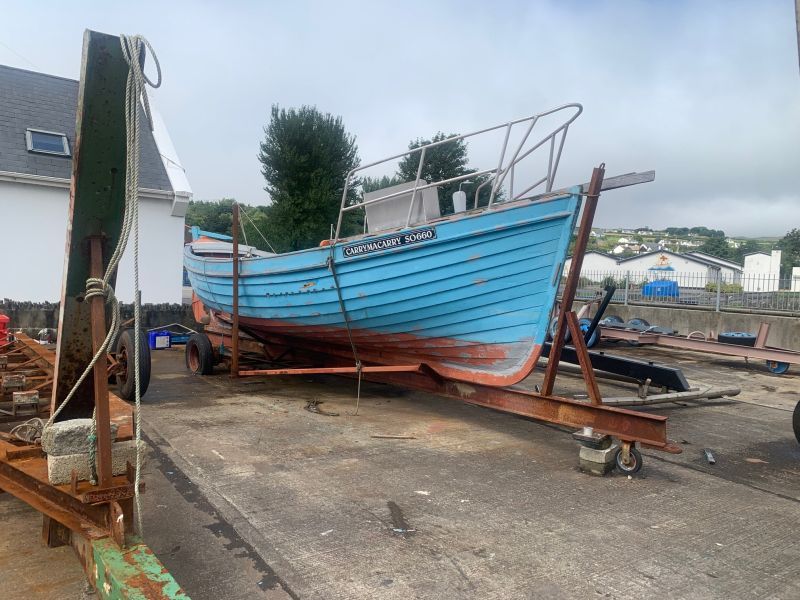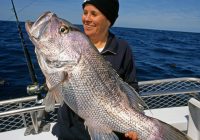In every region of the world where boats constitute an essential part of a waterborne livelihood, there are geographical and purpose-specific variations on the theme. For example, throughout most of the South Pacific, there are the narrow Japanese-style longboats; Tahiti has the mahi mahi boats, and Scotland was famous for its classic 50 ft wooden trawlers.

In wild northwestern Ireland, more specifically Donegal, the default, go-to workhorse, mostly for lobster pots, netting and salmon fishing, was the famous clinker-built “half-decker” – so called because almost half the boat was decked, but with a bow locker, a stern deck and a large centre working cockpit between the two, rather than a large deck for’ard.
These magnificent boats – now unfortunately remnants of a bygone era (much like steam tugs and paddle steamers) – were, for the most part, the work of McDonald’s of Moville. And they were built specifically and strictly to be a strong, reliable and supremely seaworthy tool of trade. Many of the earliest McDonald 28-footers had handle-start air-cooled Lister engines, no navigation lights or electrical systems whatsoever and, for a bilge pump, a hand-operated plunger on the end of a metal rod encased in a bevel-edged, square wooden channel which ran from bilge to gunnel. There were therefore no ancillary or extraneous systems that could fail and stop the boat doing its job – a classic paradigm of less being more.
These boats were, in their own way, extremely pretty. Some were conventional transom stern but most were double-enders and known as “Drontheims” – a Donegal corruption of the pronunciation of “Trondheim” in Norway, where this style of boat originated. In terms of historic significance, the McDonald boat was as much a part of Donegal aquaculture as the old grey “Fergie” T20 and Massey-Ferguson 35 tractors were of agriculture.
Just look at the picture of this fine old lady, snapped in Greencastle this week – decommissioned, maybe discarded and also a tad dilapidated but still proud. Look at the sweep and the shear and the height of the prow, not to mention that the boat is 12 boards high – the marine equivalent of a Clydesdale. Who says a workhorse cannot be a thing of purity and beauty? Most of the men who built and fished boats like this have now passed on, but the legacy they have left is indelible.
Danny Casey is highly experienced, undoubtedly idiosyncratic, and immensely knowledgeable about things mechanical, new or old. His knowledge and passion are as a result of spending his whole life in or around anything power-driven – especially marine engines. His passion for boating is second to none, with his life a montage of fabulous memories from decades spent in or around water and boats, both here and in Europe. Danny has spent myriad years in the recreational marine industry in a varied career in which he has bamboozled colleagues and competitors alike with his well-honed insight.

His mellifluous Irish accent, however, has at times been known to become somewhat less intelligible in occasional attempts at deliberate vagueness or when trying to prevent others from proffering a counter-argument or even getting a word in. Frank and to-the-point, but with a heart of gold, it can be hard to convince Danny to put pen to paper to share his knowledge. Marine Business News is grateful for his contributions. Connect with Danny through LinkedIn.







